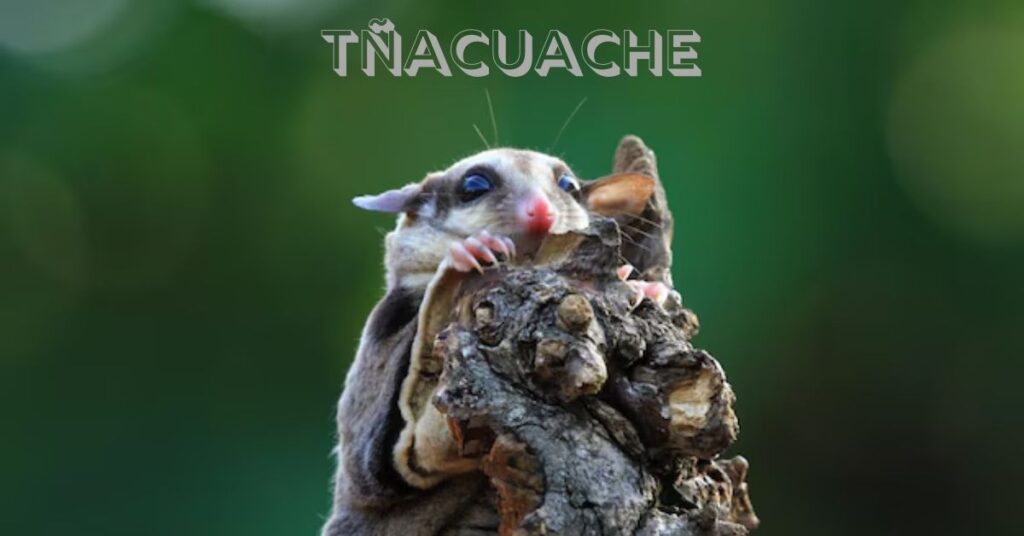The tñacuache is a term commonly used in Latin America to refer to the opossum, a nocturnal marsupial native to the Americas. Known for its adaptability and distinct behavior, they plays an important role in the ecosystem and has gained cultural significance in many regions. In this article, we will explore the fascinating characteristics of the tñacuache, its ecological importance, and the cultural narratives surrounding this intriguing creature.
What is a Tñacuache?
The tñacuache is the regional name used primarily in Mexico and some Central American countries for the Virginia opossum (Didelphis virginiana). This nocturnal mammal is a member of the marsupial family and is most commonly found in the Americas, from southern Canada down to Argentina. Known for its grayish fur, long tail, and characteristic pointed snout, these are often recognized for its ability to adapt to various environments.
The Virginia opossum is the only marsupial found in North America and is typically about the size of a domestic cat, with an average weight of 4 to 14 pounds. Its tail is prehensile, meaning it can grasp and manipulate objects, providing it with an extra level of dexterity. This adaptation is useful for climbing trees and navigating the arboreal habitats it often prefers.
The Behavior and Diet of the Tñacuache
The tñacuache is an omnivorous scavenger, meaning it will eat almost anything, including fruits, insects, small animals, and even garbage. Its opportunistic diet allows it to thrive in urban and rural environments, where food sources may be abundant and varied. The ability to consume a wide range of food also helps these Opossum survive in environments where other animals might struggle.
While primarily nocturnal, the tñacuache is also known to forage during the day if food is scarce. Its keen sense of smell and hearing aid in its search for food, allowing it to detect and avoid predators. This adaptability to different environments and food sources contributes to there widespread presence in North and South America.
Ecological Importance of the Tñacuache
The tñacuache plays a crucial role in the ecosystem as a scavenger and predator. By consuming a wide variety of foods, including insects and small rodents, the tñacuache helps regulate populations of these species, preventing overpopulation and maintaining a balanced ecosystem. Additionally, These Opossum is an important part of the food chain. Larger predators, such as coyotes, foxes, and birds of prey, will hunt and consume opossums, ensuring that the balance of the ecosystem remains intact.
Furthermore, the tñacuache aids in seed dispersal. While foraging for food, it often consumes fruits and berries. After digesting the food, the seeds are excreted in different locations, facilitating the growth of new plants and contributing to plant biodiversity in the region.
Cultural Significance of the Tñacuache
In Latin American folklore, the tñacuache is often associated with various myths and legends. One of the most well-known stories is the tale of how the opossum lost its fur. According to the myth, This Opossum once had a beautiful coat of fur but was too proud to share it with others. In the legend, the opossum’s fur is taken away as a punishment for its greed, and this explains the creature’s distinctive grayish appearance.
In some regions, the tñacuache is viewed as a symbol of survival and adaptability. Its ability to thrive in both rural and urban environments, as well as its resistance to many environmental challenges, has made it a symbol of resilience. Some people believe that seeing This Opossum is an omen of change or a sign of strength in overcoming adversity.
Read Also: Onomichi dango masayoshi ramen original: A Fusion of Tradition
The Tñacuache in Urban and Rural Areas
The tñacuache is a highly adaptable species, capable of living in both urban and rural settings. In urban areas, it often comes into contact with humans, scavenging through garbage cans and seeking shelter in attics, basements, and other hidden spaces. While some people may view this behavior as a nuisance, the tñacuache generally avoids direct conflict with humans and is unlikely to pose a threat unless it feels cornered or threatened.
In rural areas, This Opossum is often seen in forests, farmlands, and wooded regions, where it forages for food in a more natural setting. It is especially prevalent in areas with abundant food sources such as fruit orchards, vegetable gardens, and even poultry farms, where it may occasionally prey on small animals. Despite its occasional intrusion into human spaces, This Opossum is generally beneficial to the environment by controlling insect populations and helping to disperse seeds.
Conservation and Protection of the Tñacuache
Although the tñacuache is not currently listed as endangered, it faces various threats to its habitat. Urbanization, deforestation, and pollution have reduced the available natural spaces where the tñacuache can live and thrive. Habitat destruction can force the animal to move closer to human settlements, leading to conflicts with people who may view the creature as a pest.
In some areas, conservation efforts are being made to protect the tñacuache and its habitats. These efforts often include habitat restoration, the creation of wildlife corridors, and public education about the ecological benefits of This Opossum. By promoting the understanding of this unique marsupial, local communities can learn to coexist with this and appreciate its vital role in the ecosystem.
Fun Facts About the Tñacuache
- Tñacuaches can play dead: One of the most famous behaviors of the tñacuache is its ability to “play dead” or enter a state of involuntary paralysis when threatened. This is called thanatosis, and it helps the tñacuache avoid being eaten by predators.
- They are great climbers: The prehensile tail of the tñacuache is an incredible adaptation that allows it to climb trees and navigate difficult terrain. The tail acts almost like a fifth limb, offering extra support and balance.
- Low body temperature: This Opossum has a lower body temperature compared to other mammals, which helps it survive in colder climates. Its body temperature is typically around 94 to 97 degrees Fahrenheit, making it more resilient to cold weather.
- Immunity to venom: The tñacuache is immune to certain types of venom, such as that from pit vipers. This gives it a survival advantage when living in areas where venomous snakes are present.
- Short lifespan: While they can live up to four years in the wild, their average lifespan is much shorter due to predation and environmental factors. In captivity, however, they can live longer.
Conclusion
The tñacuache is more than just a curious creature; it plays a vital role in the ecosystems it inhabits and is an integral part of Latin American wildlife. From its ecological contributions to its cultural significance, this unique marsupial continues to fascinate people around the world. Whether in the wild or in urban areas, this Opossum exemplifies adaptability, resilience, and the ability to thrive in diverse environments. Understanding and appreciating this remarkable animal is essential to preserving its role in nature and ensuring its future in the Americas.







